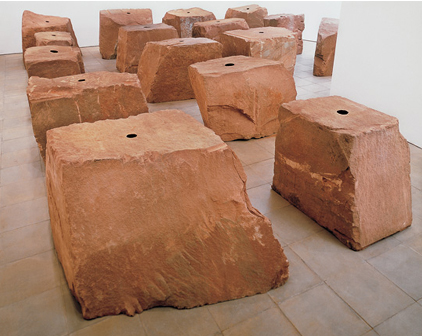Andrew Graham-Dixon on 'The Other Story' at the Hayward and Anish Kapoor at the Lisson Gallery
IN 1903 the Whitechapel Art Gallery staged its 'Indian Empire Exhibition'. Its handbook, a mundane but revealing text, included the remark that 'the weakness which has, so far, prevented India from moulding itself into a great nation from within, seems to be manifested in the almost total absence of works of Fine Art, for the production of which personal initiative and strong originality of intellectual powers are requisite.'
Nobody, of course, thinks like that any more, not in modern, post-imperial, democratic Great Britain. Or do they? Plus ca change, plus c'est la meme chose is perhaps the chief message of the Hayward Gallery's polemical and contentious new exhibition: 'The Other Story: AfroAsian Artists in Post-War Britain'. Curated by Rashid Araeen, artist and editor of the art journal Third Text, it is presented as 'an attempt to tell other stories than the official sequential or ideological ones produced by institutions of power'. Housed in just such an institution, the show represents a triumph of sorts for Araeen, who has campaigned long and vocally for the recognition of artists whom he feels have been discriminated against on the grounds of race.
But this is an odd enterprise. What, after all, can the work of artists from such a vastly differing range of backgrounds - Guyana, Pakistan, Sri Lanka, China, India, to name just some - be said to have in common? 'Otherness' is Araeen's somewhat vague, hold-all designation. 'The Other Story' suffers generally from vagueness, both of intentions and methods. It raises important issues but is not a particularly convincing or enlightening exhibition, partly for the simple reason that much of the art displayed is not very good.
Francis Souza, who arrived in London from Goa...


